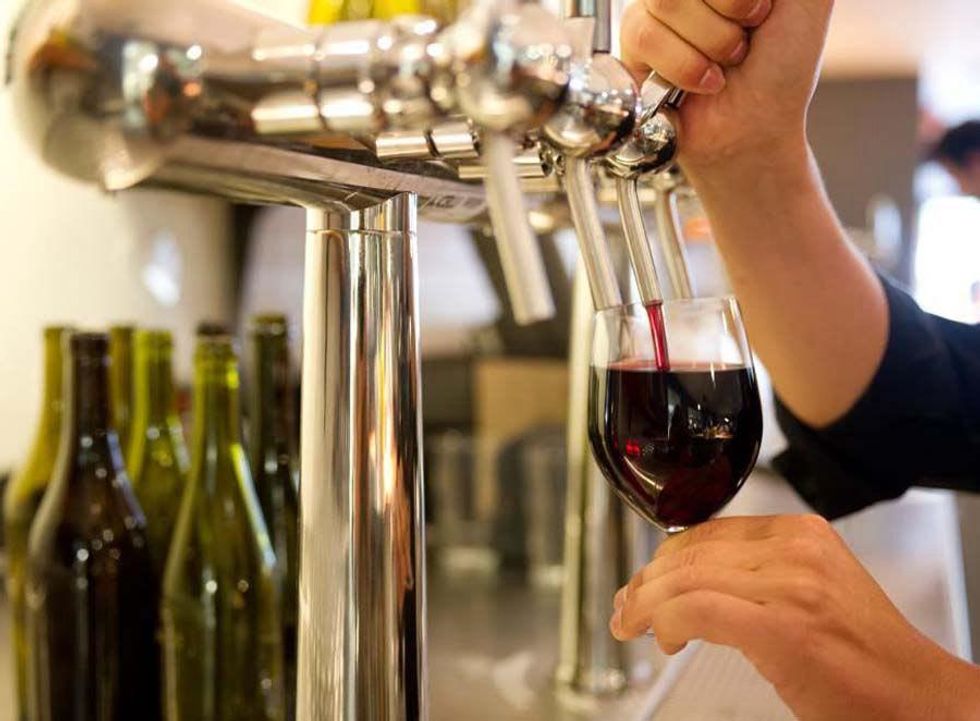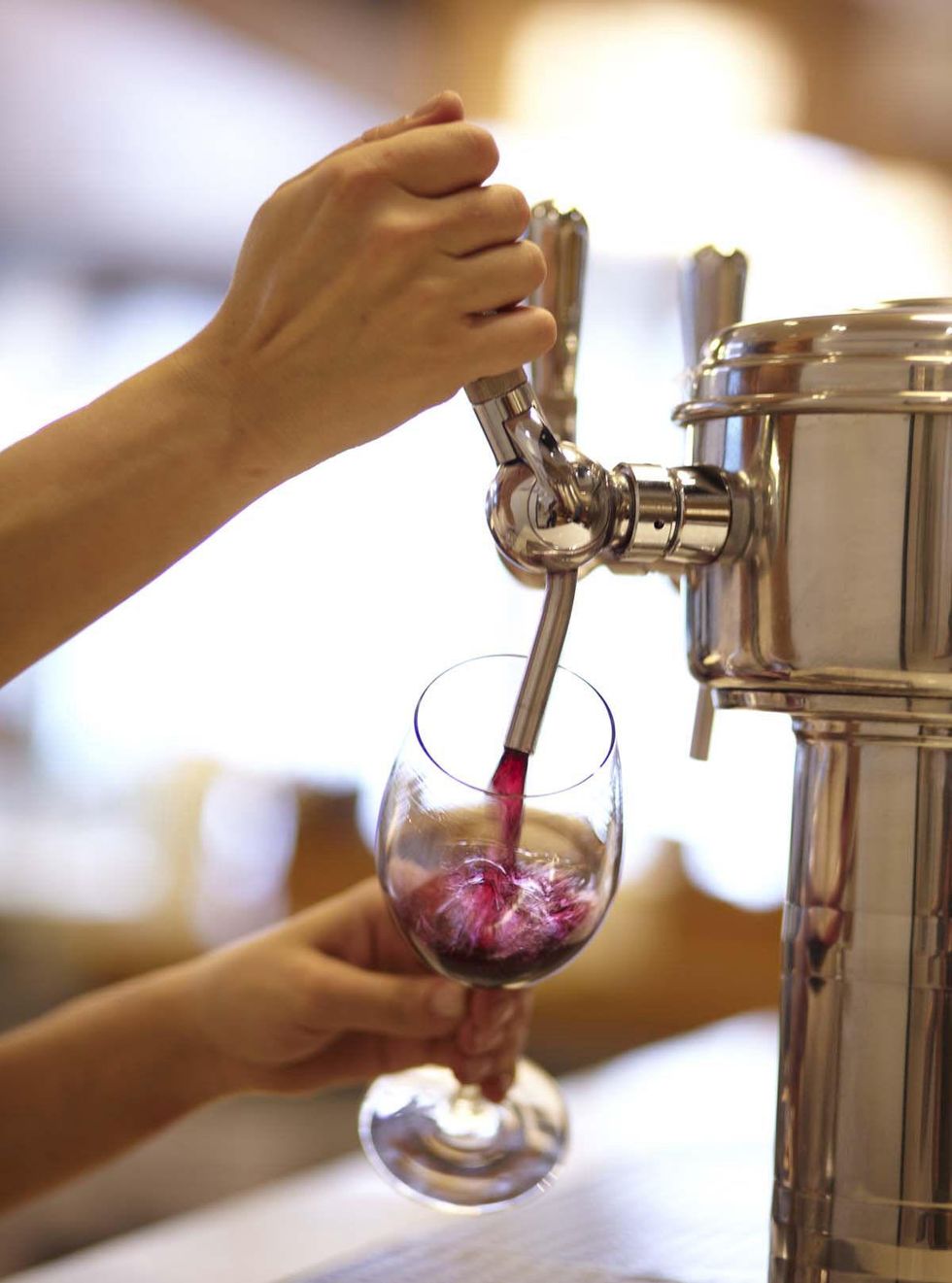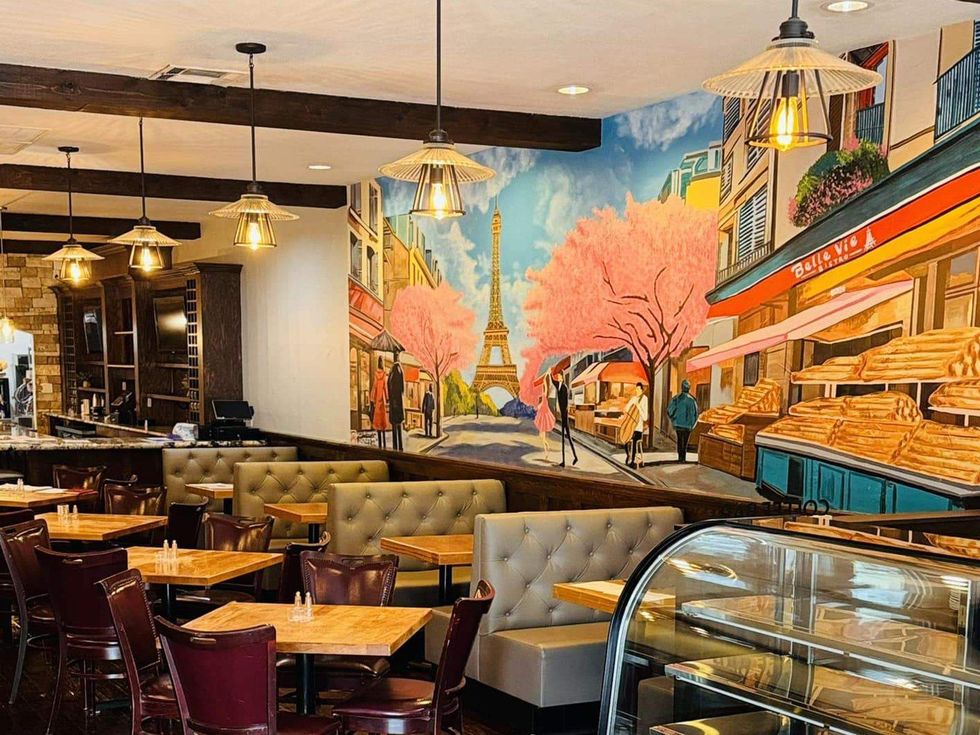Wine on Tap
Newest trend in Dallas-Fort Worth wine-drinking follows path of craft beer
The craft beer boom in Dallas-Fort Worth has everyone buzzing about taps. But there's another tap-related trend moving in: wine on tap.
With wine on tap, the bartender pours not from a bottle but pulls from a keg, just like beer. First seen locally at Whole Foods Market and The Commissary (John Tesar's now-closed burger joint at One Arts Plaza), wines on tap are beginning to surface at wine bars and fine restaurants.
Savor at Klyde Warren Park has eight wines on tap. Woodshed Smokehouse in Fort Worth has a couple; so does Brewed, the coffeehouse on Fort Worth's Magnolia Avenue. WineHaus in Fort Worth is a big player, with nine taps and plans for three more.
"Wine on tap is usually cheaper, it's better for the environment and it makes wine more approachable," says consultant Jimmy Contrera.
More wines on tap will appear in June with the arrival of LYFE Kitchen, the healthy new restaurant chain opening three branches around Dallas, including Plano, Preston Center and West Village. Each location will have six taps.
The benefits are numerous, from keeping spent bottles out of the landfill to serving wine never spoiled by a flawed cork. LYFE Kitchen estimates that a restaurant with one tap might use 100 barrels per year. Each barrel represents 26 bottles and 39 pounds of waste of shipping boxes, foil wraps, corks and labels.
WineHaus owner Lindsey Crawford knew that she'd be serving wine by the glass and saw wine on tap as the obvious route.
"One of my big things with wine is freshness and temperature control, especially on a by-the-glass program," she says. "So often, bottles are opened and then not stored properly. This is the only way to eliminate that.
"It's also a lot more green," she says. "I don't have to deal with waste — not just the packaging, but I'm not pouring wine down the drain."
Each of Whole Foods' 16 in-store bars in Texas typically features four wines on tap: two red and two white. You can consume a glass in the store or take the wine to go in a reusable vessel; called a "boar," it's the wine equivalent of a beer growler.
"There was initially a hesitation from customers because it's not a concept you see everywhere yet," says Whole Foods wine expert Nicole Becerra. "When they realize that the taps include not just beer but wine, they're amazed. It's become a word-of-mouth thing."
Seeing wine on tap shed its negative connotation reminds Dallas wine consultant Jimmy Contreras of another breakthrough in wine technology.
"It reminds me of the initial reaction to screw caps," he says. "Traditionalists would say, 'How could you do that? It ruins the romanticism.' Wine on tap faced the same perception as screw caps, that they were second-rate. But as more wineries have adopted screw caps, they've gotten past that.
"Wine on tap is usually cheaper, it's better for the environment and it makes wine more approachable," he says.
There's also been a huge increase in the selection, says Whole Foods' Becerra, with respected labels such as Frogs Leap, Trefethen, Qupe and Simi. "My distributor just sent me a long list of new wines," she says. "We're excited about the opportunity to offer some new choices."
It's an ideal way to "go local," says Wine Haus' Crawford.
"I go out and ask wineries about putting wine in a keg," she says. "On their end, they know their product will stay good and will not be served flat or at an inappropriate temperature."
Her selections include a Tempranillo by Spicewood that's made just for her. "That's one of my biggest sellers," she says. "I love to support Texas wineries, and it makes sense because they're closer to home."



 Mural on the wall at Belle Vie Bistro RockwallFacebook
Mural on the wall at Belle Vie Bistro RockwallFacebook